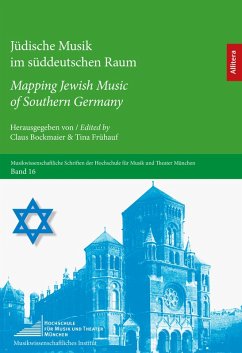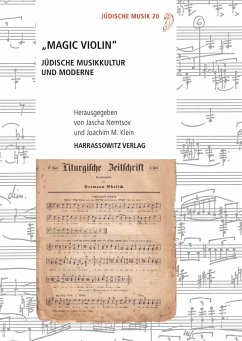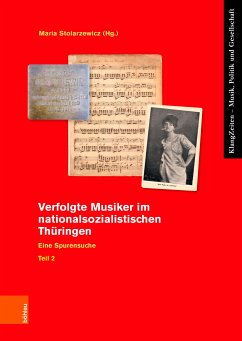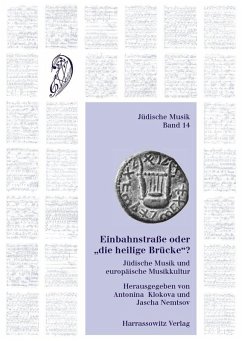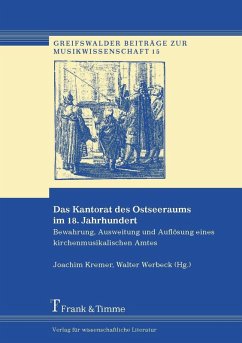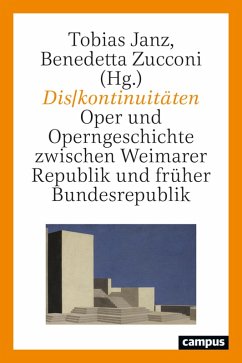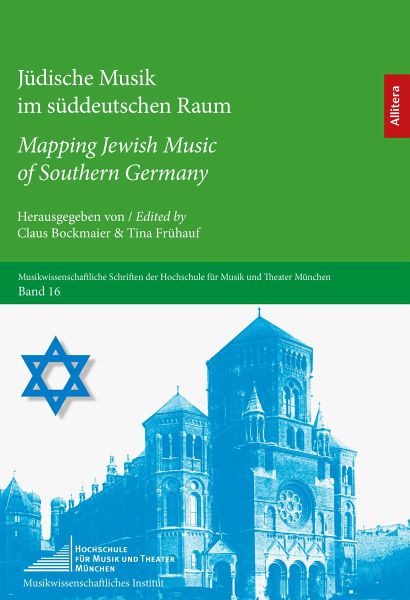
Jüdische Musik im süddeutschen Raum / Mapping Jewish Music of Southern Germany (eBook, PDF)
Versandkostenfrei!
Sofort per Download lieferbar
Statt: 49,00 €**
29,99 €
inkl. MwSt. und vom Verlag festgesetzt.
**Preis der gedruckten Ausgabe (Gebundenes Buch)
Alle Infos zum eBook verschenkenWeitere Ausgaben:

PAYBACK Punkte
0 °P sammeln!
Dieser Band kartiert die jüdische Musik Süddeutschlands im 19.¿und 20.¿Jahrhundert: als einen Raum, der jüdische Musikgeschichte produziert, beherbergt und bewahrt; als einen gemeinsamen Raum von Juden und Nicht-Juden mit der möglichen Kultur des Zusammenflusses; und als einen Raum der Ausgrenzung und Verfolgung. Diese Räume - teils symbolisch, abstrakt, metaphorisch, teils konkret und inszeniert - erschließen sich in acht Kapiteln: zur Topografie jüdischen Musiklebens im NS-Staat in München, zum Leben und Wirken von Jakob Schönberg und Richard Fuchs im Kontext jüdischer Kunstmusik...
Dieser Band kartiert die jüdische Musik Süddeutschlands im 19.¿und 20.¿Jahrhundert: als einen Raum, der jüdische Musikgeschichte produziert, beherbergt und bewahrt; als einen gemeinsamen Raum von Juden und Nicht-Juden mit der möglichen Kultur des Zusammenflusses; und als einen Raum der Ausgrenzung und Verfolgung. Diese Räume - teils symbolisch, abstrakt, metaphorisch, teils konkret und inszeniert - erschließen sich in acht Kapiteln: zur Topografie jüdischen Musiklebens im NS-Staat in München, zum Leben und Wirken von Jakob Schönberg und Richard Fuchs im Kontext jüdischer Kunstmusik, zu den musikalischen Praktiken der jüdischen Gemeinden in Bamberg und Binswangen, zu den Aktivitäten des Esslinger Cantors Mayer Levi, zur Verlagerung süddeutscher und österreichischer jüdischer Musiker und ihrem Wirken in Ferramonti di Tarsia und nicht zuletzt zu Paul Ben-Haims sozialem und intellektuellem Umfeld vor und kurz nach der Emigration. This volume maps Jewish music of southern Germany in the nineteenth and twentieth centuries. It explores this region as a space that produces, inhabits, and preserves Jewish musical history; as a shared space between Jews and non-Jews that can result in a culture of confluence; and as a space of exclusion and persecution. These spaces¿- some symbolic, abstract, metaphorical, and others concrete and enacted - are unraveled in eight chapters that address the topography of Jewish musical life in the NS state using the example of Munich, the life and work of Jakob Schönberg and Richard Fuchs in the context of Jewish art music, the musical practices of the Jewish communities in Bamberg and Binswangen, the activities of Cantor Mayer Levi of Esslingen, the dislocation of South German and Austrian Jewish musicians and their activities in the camp of Ferramonti di Tarsia, and Paul Ben-Haim's social and intellectual environment before and shortly after emigration.
Dieser Download kann aus rechtlichen Gründen nur mit Rechnungsadresse in A, B, BG, CY, CZ, D, DK, EW, E, FIN, F, GR, H, IRL, I, LT, L, LR, M, NL, PL, P, R, S, SLO, SK ausgeliefert werden.




